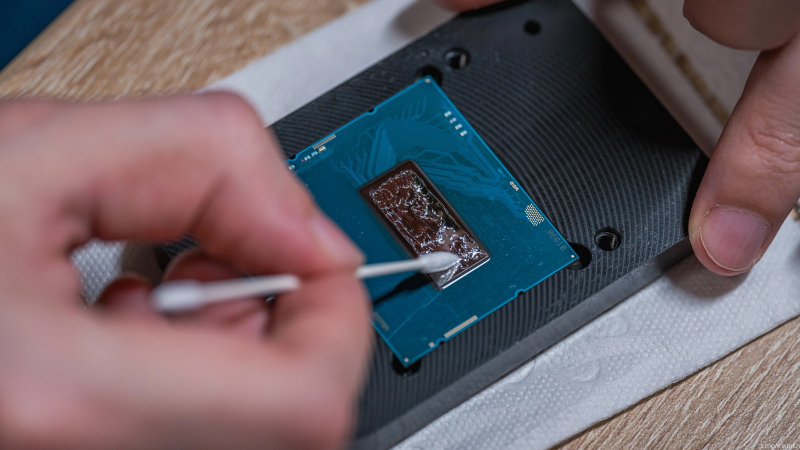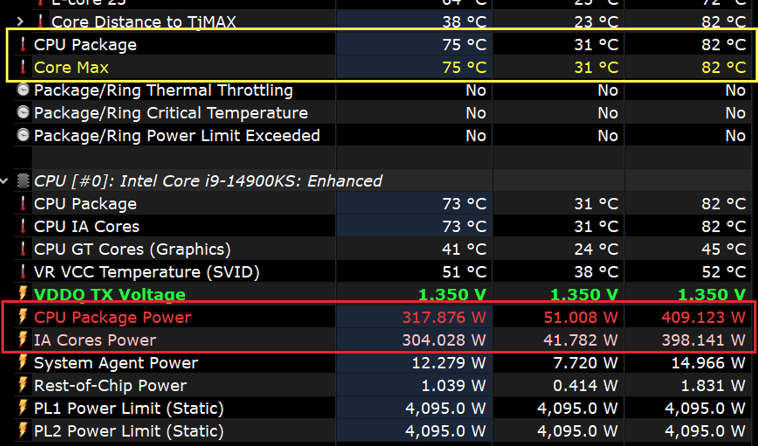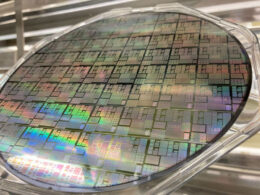Though not officially unveiled by Intel, tech enthusiasts and overclockers have already gained access to the long-awaited flagship processor, Core i9-14900KS. One such enthusiast decided to delid or “scalp” the processor.
Boasting 24 cores supporting 32 virtual threads (8 P-cores and 16 E-cores), the Core i9-14900KS comes with a 36 MB L3 cache and a 32 MB L2 cache. Running at a base frequency of 3.2 GHz, it offers a boost frequency of 6.2 GHz making it the fastest out-of-box processor worldwide. With a nominal TDP rating of 150 Watts, it’s 25 Watts more power-hungry than its counterpart, the Core i9-14900K. Designed specifically for enthusiasts, it will be available in limited quantities.
Earlier leaks suggest that the peak power consumption of the Core i9-14900KS could exceed 400 Watts. The latest data presented by an Overclock.net forum member, who previously published processor images, certifies this information.

The processor’s heat spreader safeguards the processor die from damage. Its removal and substitution of the stock thermal interface with a potent liquid metal considerably reduces operating temperatures. In the case of the Core i9-14900KS, the thermal interface replacement resulted in a reduced processor temperature from 85 degrees Celsius to 75 in the Cinebench test, and from 89 to 82 degrees in the Y-cruncher test.


Interestingly, at stock configuration, the maximum chip power consumption in Cinebench was recorded to be 376 W which dropped to 366 W after the thermal interface was replaced. Meanwhile, in the Y-cruncher, the power consumption reduced from 432 W to 409 W after delidding and applying liquid metal. Notably, these experimental tests on the Core i9-14900KS utilized a DeepCool LS720 SE Liquid Cooler system with a 360-mm radiator, according to the author.
According to recent rumors, the Core i9-14900KS is likely to be introduced and hit the shelves by March 14.





